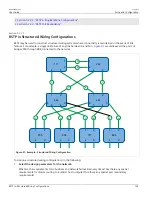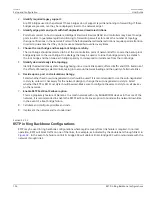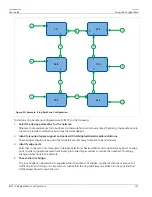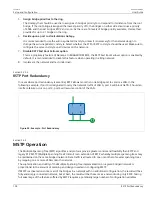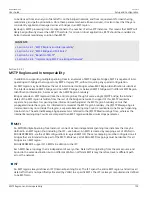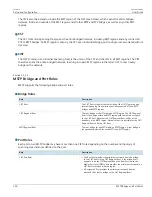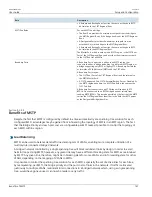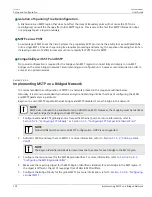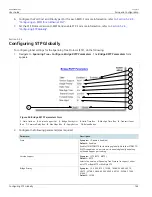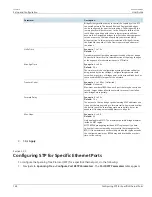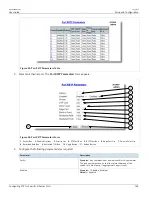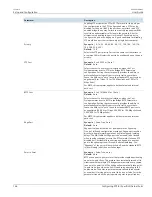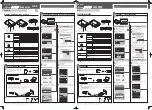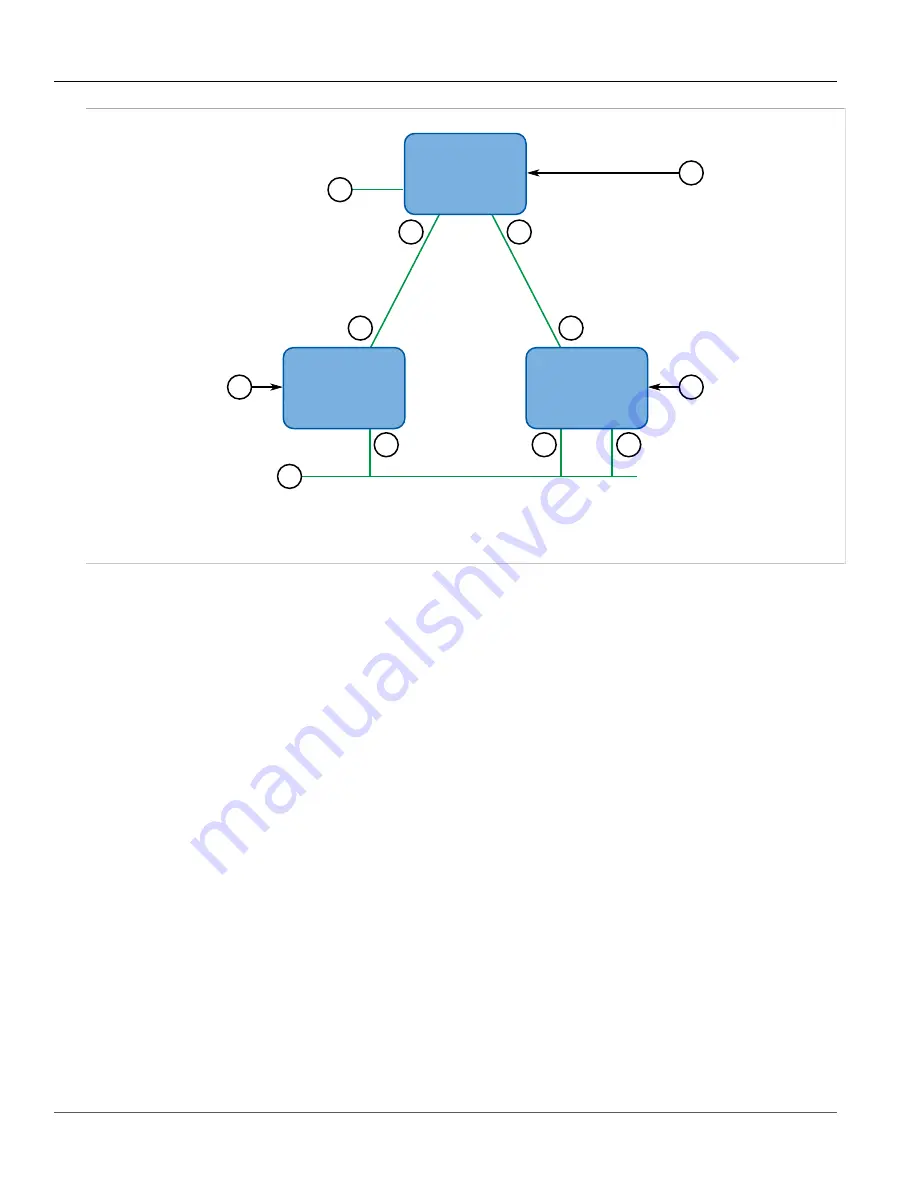
RUGGEDCOM ROS
User Guide
Chapter 5
Setup and Configuration
Edge Ports
151
3
2
1
C
1
2
1
2
3
3
D
4
2
2
1
3
4
5
6
3
Figure 90: Bridge and Port Roles
1.
Root Bridge
2.
Designated Bridge
3.
Designated Port
4.
Root Port
5.
Alternate Port
6.
Backup Port
A port is alternate when it receives a better message from another bridge on the LAN segment it is connected to.
The message that an Alternate Port receives is better than the port itself would generate, but not good enough to
convince it to become the Root Port. The port becomes the alternate to the current Root Port and will become the
new Root Port should the current Root Port fail. The Alternate Port does not participate in the network.
A port is a Backup Port when it receives a better message from the LAN segment it is connected to, originating
from another port on the same bridge. The port is a backup for another port on the bridge and will become active
if that port fails. The Backup Port does not participate in the network.
Section 5.2.1.2
Edge Ports
A port may be designated as an Edge Port if it is directly connected to an end station. As such, it cannot create
bridging loops in the network and can thus directly transition to forwarding, skipping the listening and learning
stages.
Edge ports that receive configuration messages immediately lose their Edge Port status and become normal
spanning tree ports. A loop created on an improperly connected edge port is thus quickly repaired.
Because an Edge Port services only end stations, topology change messages are not generated when its link
toggles.



















